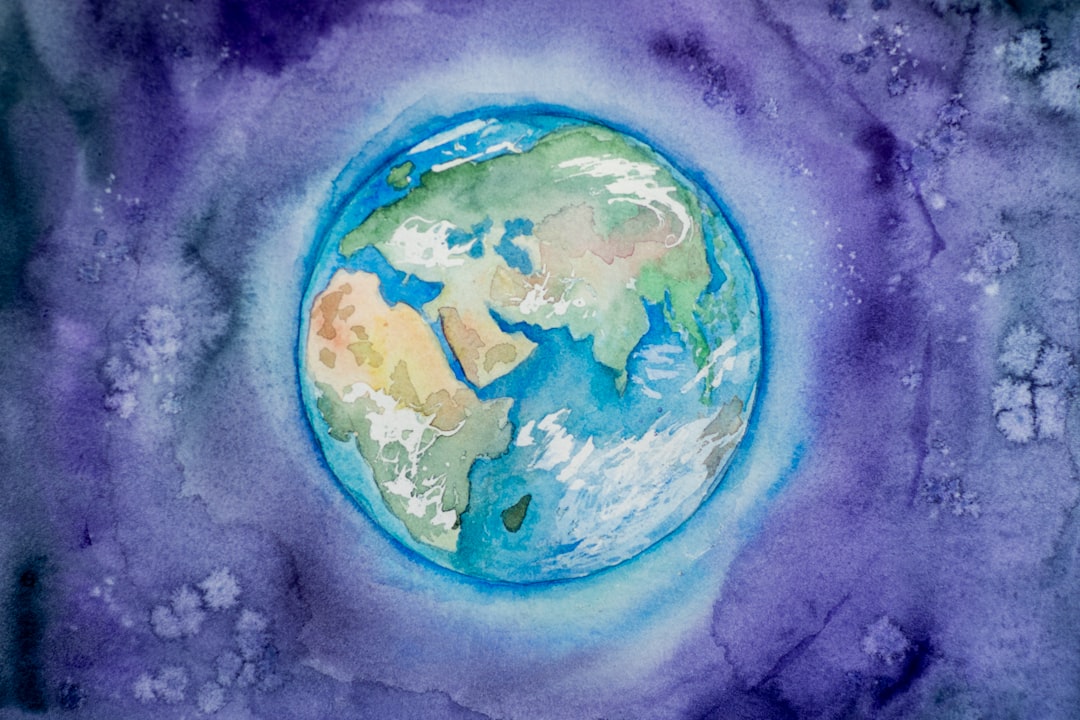Earth is a complex and dynamic planet, constantly shaped by the interactions of various systems that sustain life. These major systems—the atmosphere, hydrosphere, lithosphere, and biosphere—do not operate in isolation. Instead, they are interconnected, forming a web of interactions that influence everything from local weather patterns to global climate, from volcanic eruptions to the growth of forests and the flow of rivers.
Earth Systems Science is the study of these interactions. It helps us understand how natural processes work together, and how human activity is altering the balance. In this blog post, we’ll take a closer look at each of the four main Earth systems and explore how they interact to form the world we live in.
The Four Earth Systems
1. Atmosphere – The Blanket of Gases
The atmosphere is the layer of gases that surrounds the Earth, made up mainly of nitrogen, oxygen, carbon dioxide, and trace gases. It regulates the planet’s temperature, distributes heat and moisture through wind and weather patterns, and provides the oxygen needed for life.
-
Key functions: Climate regulation, weather patterns, protection from harmful solar radiation.
-
Example interaction: Greenhouse gases in the atmosphere trap heat, influencing temperatures in the biosphere and affecting ocean currents in the hydrosphere.
2. Hydrosphere – All the Water on Earth
The hydrosphere includes all of Earth’s water—liquid, solid, or vapor. This encompasses oceans, lakes, rivers, glaciers, groundwater, and even atmospheric moisture. Water cycles continuously through evaporation, condensation, precipitation, and runoff, linking the hydrosphere with every other system.
-
Key functions: Supports aquatic life, shapes landscapes, regulates temperature.
-
Example interaction: Increased evaporation due to higher temperatures in the atmosphere can lead to more intense storms and flooding, affecting the biosphere and reshaping the lithosphere.
3. Lithosphere – The Solid Earth
The lithosphere consists of Earth’s crust and the upper part of the mantle. It includes mountains, valleys, rocks, minerals, and soils. This is the system where tectonic activity occurs—think earthquakes, volcanoes, and the formation of continents.
-
Key functions: Provides the foundation for ecosystems, stores nutrients and minerals.
-
Example interaction: An earthquake (lithosphere) can trigger a tsunami (hydrosphere), which impacts coastal ecosystems (biosphere) and can even change air pressure (atmosphere).
4. Biosphere – The Realm of Life
The biosphere is the zone of life on Earth. It includes all living organisms, from the tiniest microbes to the largest mammals. Life exists in all environments, from ocean depths to mountaintops, and it influences and is influenced by all other Earth systems.
-
Key functions: Maintains ecological balance, cycles nutrients, and drives biological evolution.
-
Example interaction: Deforestation (biosphere) releases carbon into the atmosphere, contributing to global warming, which in turn affects weather patterns and water availability.
The Power of Interconnection
Earth Systems Science emphasizes that no system acts alone. Here are a few real-world examples of system interactions:
-
Climate Change: Human activity in the biosphere (burning fossil fuels) increases greenhouse gases in the atmosphere, raising global temperatures. This affects the hydrosphere through melting ice caps and rising sea levels, and stresses ecosystems in both the biosphere and lithosphere.
-
Volcanic Eruption: A volcanic eruption (lithosphere) releases gases into the atmosphere, which can cool global temperatures temporarily. Ash can also affect plant and animal life in the biosphere, and change water chemistry in the hydrosphere.
-
Hurricanes: These form in the atmosphere but draw energy from warm ocean waters in the hydrosphere. When they hit land, they can reshape the lithosphere and devastate ecosystems in the biosphere.
Why Earth Systems Science Matters
Studying Earth as a system helps scientists and policymakers:
-
Predict natural disasters and their cascading impacts.
-
Understand human influence on climate and ecosystems.
-
Develop more sustainable ways to interact with our planet.
It also reminds us that everything is connected—what we do in one system inevitably affects the others. Whether it’s cutting down forests, burning fuel, or diverting rivers, our actions ripple through Earth’s natural balance.
Conclusion
Earth Systems Science offers a holistic view of our planet, one that highlights the deep interconnections between air, water, land, and life. By understanding these connections, we can better appreciate the fragility of the systems we depend on and take informed steps toward protecting them.
As global challenges like climate change, pollution, and biodiversity loss grow more urgent, the importance of thinking systemically becomes clearer. Earth doesn’t function in silos—neither should we.

Comments
No comments yet. Be the first to comment!
You must be logged in to comment. Login